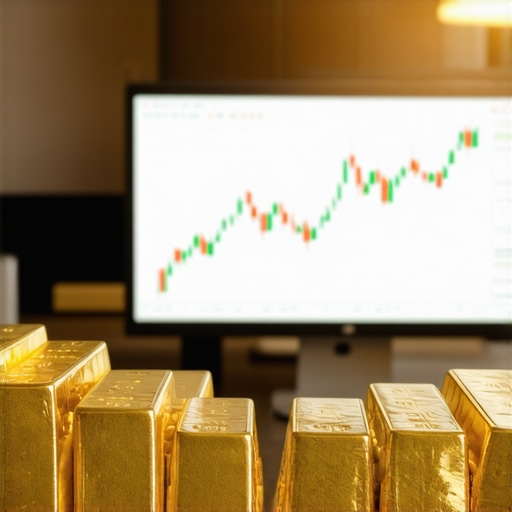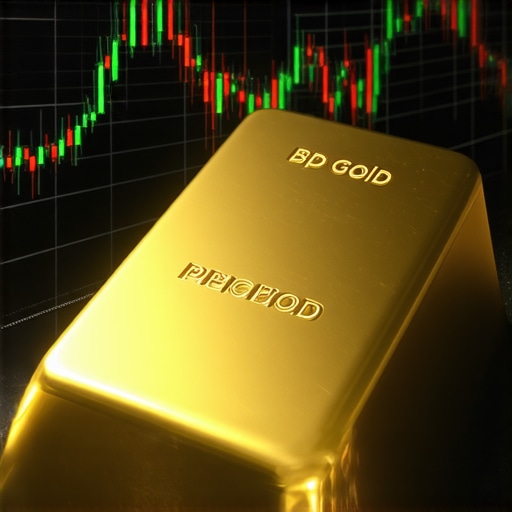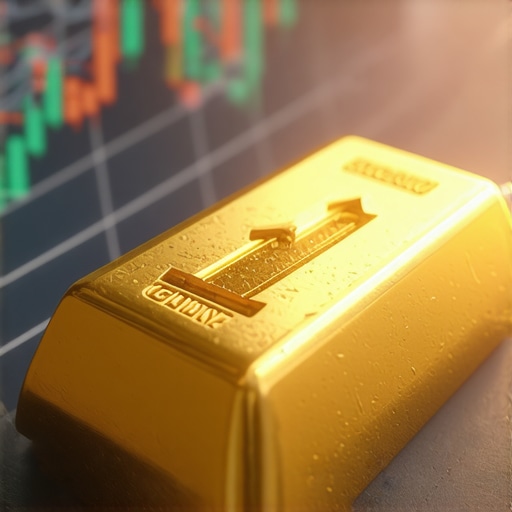Understanding Gold Price Dynamics
As we look towards 2025, the gold price dynamics present a compelling narrative for investors and market analysts alike. The fluctuations in gold prices are influenced by a myriad of factors, including economic stability, inflation rates, and global demand for gold. Understanding these dynamics is crucial for anyone looking to navigate the gold investment landscape effectively.
The Role of Economic Indicators in Gold Pricing
Economic indicators play a significant role in determining gold prices. For instance, when inflation rates rise, gold is often viewed as a safe-haven asset, leading to increased demand and subsequently higher prices. Conversely, during periods of economic growth, investors might shift their focus to equities, which can lead to a decrease in gold prices. Keeping an eye on key economic indicators such as inflation, unemployment rates, and interest rates can provide insights into potential gold price movements.
Global Demand Trends for Gold
The global demand for gold is another crucial factor that influences its pricing. Countries like China and India have historically been significant consumers of gold, primarily for jewelry and as a form of investment. As we approach 2025, understanding the demand trends in these regions can provide valuable insights into future price movements. Changes in consumer preferences and purchasing power in these key markets can dramatically impact the overall demand for gold.
Central Bank Purchases and Their Impact
Central banks around the world have been increasing their gold reserves as a hedge against economic uncertainty. This trend is expected to continue into 2025, with central bank purchases influencing gold prices significantly. The impact of these purchases cannot be overstated, as they reflect a broader trend of nations seeking to bolster their financial stability through gold reserves. Monitoring these purchases can provide foresight into potential price increases.
Technological Innovations Affecting Gold Extraction
Technological advancements in mining and extraction methods are also set to influence gold prices in the coming years. Enhanced mining technologies can lead to lower production costs, which might stabilize or reduce prices in a competitive market. Additionally, the increasing focus on sustainable mining practices is reshaping the industry. Investors should consider how these innovations may affect supply and demand dynamics in the gold market.
Investor Sentiment and Market Speculation
Investor sentiment plays a crucial role in the short-term fluctuations of gold prices. As we approach 2025, market speculation driven by geopolitical tensions, economic forecasts, and investor behavior can create volatility in gold prices. Understanding how to interpret market sentiment can provide investors with a strategic advantage when trading or investing in gold.
As we delve deeper into the implications of these factors, it becomes essential to explore specific strategies for effectively investing in gold in this evolving landscape. For more detailed insights, consider checking out our post on gold trading techniques that can help you navigate the complexities of the market.
Analyzing Gold Market Trends: What’s Next for Investors
The gold market is notoriously sensitive to a variety of factors, making it essential for investors to stay informed about upcoming trends. As we move closer to 2025, several critical elements are likely to impact gold prices, including geopolitical events, shifts in investor preferences, and evolving economic policies. By understanding these trends, investors can make more informed decisions regarding their gold investments.
Geopolitical Events and Their Impact on Gold Prices
Geopolitical tensions often drive investors towards gold, viewing it as a safe haven during uncertain times. Events such as conflicts, trade wars, and political instability can lead to increased demand for gold, subsequently driving up prices. Keeping abreast of global news and understanding how these events influence market sentiment can provide investors with a strategic edge. For a deeper dive into this topic, consider exploring our article on gold price fluctuations.
Shifts in Investor Preferences: The Rise of Gold ETFs
In recent years, there has been a significant shift towards exchange-traded funds (ETFs) as a preferred method of investing in gold. Gold ETFs offer a convenient way to gain exposure to gold prices without the need for physical storage, making them increasingly popular among younger investors. This trend is expected to continue, presenting opportunities for savvy investors to leverage gold ETFs in their portfolios. If you want to learn more about this investment vehicle, check out our guide on gold ETFs.
Central Bank Policies and Their Influence on Gold Demand
Central banks play a pivotal role in shaping the demand for gold. Their policies regarding gold reserves can significantly influence market prices. In 2025, as countries navigate economic uncertainties, central banks may continue to increase their gold holdings, boosting demand and creating upward pressure on prices. Understanding how central bank actions can affect gold demand is crucial for investors looking to anticipate price movements. For insights into this topic, explore our article on central bank purchases.
Investor Sentiment and Behavioral Trends in Gold Investment
Investor sentiment plays a crucial role in the gold market, often causing short-term price fluctuations. Behavioral trends, such as fear of inflation or economic downturns, can lead to increased buying activity. As we approach 2025, monitoring investor sentiment through market analysis tools can help investors make timely decisions. For those looking to understand market analysis better, our post on gold market analysis offers valuable insights.
Environmental and Ethical Considerations in Gold Mining
Increasing awareness of environmental and ethical issues surrounding gold mining is shaping the future of gold investments. Investors are becoming more discerning, favoring companies that adhere to sustainable practices. This trend may lead to a shift in demand towards ethically sourced gold, impacting prices and investment strategies. If you’re interested in the implications of sustainable mining on your investments, read our guide on physical gold vs. gold coins.
As we continue to explore the intricate web of factors influencing gold prices, it becomes clear that the landscape is evolving rapidly. Understanding these dynamics not only aids in making informed investment choices but also positions investors to anticipate changes in the market effectively. The next section will delve into specific strategies for investing in gold amid these trends, ensuring that you are well-prepared for the opportunities that 2025 may present.
Adapting to Market Volatility: Strategies for Gold Investors
As we delve deeper into the realm of gold investment, understanding how to adapt to market volatility becomes paramount. Investors must be equipped with strategies to mitigate risks while maximizing potential returns. This includes staying informed about market fluctuations and employing tactical approaches to buying and selling gold. For insights into effective trading techniques, be sure to review our guide on best practices for gold trading.
Diversifying Your Gold Portfolio: Beyond Physical Gold
Diversification is a crucial principle in investment strategy, and gold is no exception. While many investors gravitate towards physical gold, exploring options such as gold ETFs and gold stocks can enhance portfolio performance. By incorporating a mix of physical assets and financial products, investors can manage risks more effectively. To understand the benefits of using ETFs in your investment strategy, check out our post on gold ETFs.
Evaluating Gold Mining Stocks: Opportunities and Risks
Investing in gold mining stocks presents unique opportunities but also inherent risks. The performance of mining companies is often tied to gold prices, but factors such as operational efficiency, management, and geopolitical risks can greatly influence outcomes. Investors should conduct thorough research and consider the overall health of mining companies before investing. For a comprehensive overview of what to consider, refer to our article on physical gold investment strategies.
Understanding Gold Futures: A Financial Tool for Investors
Gold futures are contracts that allow investors to buy or sell gold at a predetermined price at a future date. This financial instrument can be a powerful tool for hedging against price fluctuations or speculating on future price movements. However, trading futures requires a deep understanding of market dynamics and can be risky. For a beginner-friendly introduction to this investment vehicle, explore our guide on gold futures.
Monitoring Global Economic Events: A Key to Gold Investment Success
Keeping an eye on global economic events is essential for successful gold investment. Key events such as interest rate announcements, geopolitical tensions, and economic reports can significantly impact gold prices. Investors should utilize economic calendars and market analysis tools to stay ahead of trends. For more detailed insights on economic influences, check out our article on gold price forecasts.
Identifying Entry and Exit Points in Gold Trading
Successful gold trading often hinges on identifying the right entry and exit points. This requires a solid grasp of technical analysis, market trends, and the ability to interpret price signals. Investors should also consider their risk tolerance and investment goals when making decisions. For an in-depth look at evaluating market trends, refer to our post on analyzing gold market trends.
The Importance of Continuous Learning in Gold Investment
The landscape of gold investment is constantly evolving, making continuous learning essential for investors. Engaging with expert analysis, market reports, and educational resources can equip investors with the knowledge needed to make informed decisions. For those seeking to enhance their understanding of gold investment, our post on gold stocks provides valuable insights.
Understanding Gold Price Volatility: Key Influencers
Gold prices are notoriously volatile, influenced by various factors ranging from geopolitical events to economic indicators. Investors must stay informed about these dynamics to make strategic decisions. As we approach 2025, understanding the key influencers behind gold price fluctuations is essential. This includes monitoring global economic conditions, central bank policies, and shifts in consumer demand.
Geopolitical Tensions and Their Effect on Gold Prices
Geopolitical tensions can create significant fluctuations in gold prices as investors often flock to gold during times of uncertainty. Events like international conflicts, trade disputes, and political unrest can drive demand for gold, causing prices to surge. Keeping an eye on global developments is crucial for predicting potential price movements. For insights into how these factors play out in the market, consider exploring our article on analyzing gold market trends.
Investment Strategies: Leveraging Gold ETFs
With the rise of gold exchange-traded funds (ETFs), investors now have access to a more flexible investment vehicle. Gold ETFs allow for easy trading without the need to physically hold gold, making them an attractive option for many. As we look forward to 2025, incorporating gold ETFs into your investment strategy can enhance portfolio diversification and reduce exposure to the risks associated with physical gold. For more information on this investment vehicle, check out our guide on gold ETFs.
Risk Management in Gold Trading
Effective risk management strategies are vital for successful gold trading. Investors should utilize stop-loss orders, diversify their portfolios, and continuously monitor market conditions to mitigate risks. Understanding market trends and maintaining a disciplined approach can help protect your investments from sudden market downturns. For additional insights into managing risks, refer to our post on best practices for gold trading.
Evaluating Economic Indicators: Insights for Investors
Monitoring economic indicators such as inflation rates, employment figures, and interest rates is essential for forecasting gold price movements. When inflation rises, gold often gains appeal as a hedge, prompting increased demand. Conversely, low inflation can lead to decreased interest in gold as investors seek higher returns in equities. Being aware of these indicators allows investors to make timely and informed decisions about their gold investments. For further reading on this topic, explore our article on gold price fluctuations.
Future Outlook: Gold as a Safe Haven Asset
The future of gold remains promising, particularly as economic uncertainties loom. Investors are increasingly recognizing gold as a safe-haven asset in turbulent times. As we approach 2025, the demand for gold as a protective investment is likely to grow, particularly among conservative investors seeking stability in their portfolios. Understanding these trends can provide valuable insights into future investment opportunities.
Conclusion: Preparing for 2025 and Beyond
In conclusion, navigating the gold investment landscape requires a multifaceted approach. By staying informed about market dynamics, geopolitical events, and economic indicators, investors can better position themselves for success. Whether you’re considering physical gold, gold ETFs, or mining stocks, understanding the intricate factors at play will empower you to make well-informed decisions. For a deeper dive into strategies for gold investment, check our comprehensive guides on maximizing returns and gold price forecasts.
Comprehensive FAQ Section
What are the current gold price trends for 2025?
As of now, gold prices are influenced by various factors including global economic conditions, inflation rates, and geopolitical tensions. Analysts predict continued volatility, with potential upward trends as investors seek safe-haven assets.
How can I start investing in gold?
To begin investing in gold, consider options such as purchasing physical gold, investing in gold ETFs, or buying shares in gold mining companies. Researching each option and understanding your investment goals is essential for making informed decisions.
What are gold ETFs, and how do they work?
Gold ETFs are exchange-traded funds that invest in gold bullion or gold-related securities. They provide a convenient way for investors to gain exposure to gold without needing to own physical gold. Investors can buy and sell shares of gold ETFs on stock exchanges, just like regular stocks.
What are the risks associated with investing in gold?
Investing in gold carries risks such as price volatility, market fluctuations, and geopolitical uncertainties. Additionally, physical gold requires secure storage, and gold mining stocks can be influenced by operational challenges and management decisions.
How does inflation affect gold prices?
Inflation typically drives investors towards gold as a hedge against declining purchasing power. When inflation rises, the demand for gold often increases, which can lead to higher prices. Conversely, low inflation may reduce interest in gold investments.
What should I consider when investing in gold mining stocks?
When considering gold mining stocks, investors should evaluate the company’s operational efficiency, management quality, and geopolitical risks that may affect operations. Additionally, understanding the correlation between gold prices and mining stock performance is crucial.
Is gold a good investment for retirement?
Gold can be a valuable addition to a retirement portfolio as a hedge against market volatility and inflation. However, it’s essential to balance gold investments with other asset classes to ensure a diversified and stable retirement strategy.
How can I predict gold price movements?
Predicting gold price movements involves analyzing economic indicators, geopolitical events, and market trends. Staying informed about central bank policies, inflation rates, and demand from major markets can provide insights into potential price changes.
What are the benefits of investing in gold?
The benefits of investing in gold include portfolio diversification, protection against inflation, and serving as a hedge during economic downturns. Gold’s historical stability during market turbulence makes it an attractive investment option.
Authority Resources
For further insights and expert analysis on gold investment, consider visiting the following trusted resources:
- World Gold Council – Provides comprehensive research and articles on gold market trends and investment strategies.
- Investopedia – Offers educational content on various investment vehicles, including gold and precious metals.
- Kitco – A leading source for market information and analysis on gold prices and trends.
- Bloomberg – Delivers financial news and data, including updates on gold market movements and economic indicators.
- Reuters – Features up-to-date news on global economic events that impact gold prices.
Conclusion: Preparing for 2025 and Beyond
In summary, navigating the gold investment landscape as we approach 2025 requires a comprehensive understanding of market dynamics, economic indicators, and geopolitical events. By leveraging strategies such as diversifying your portfolio with gold ETFs, monitoring central bank policies, and staying informed about global economic trends, investors can position themselves for success. The demand for gold as a safe-haven asset is likely to grow, making it an opportune time to explore various investment avenues. Stay proactive in your research, utilize authority resources, and adapt your strategies to thrive in the evolving gold market.









